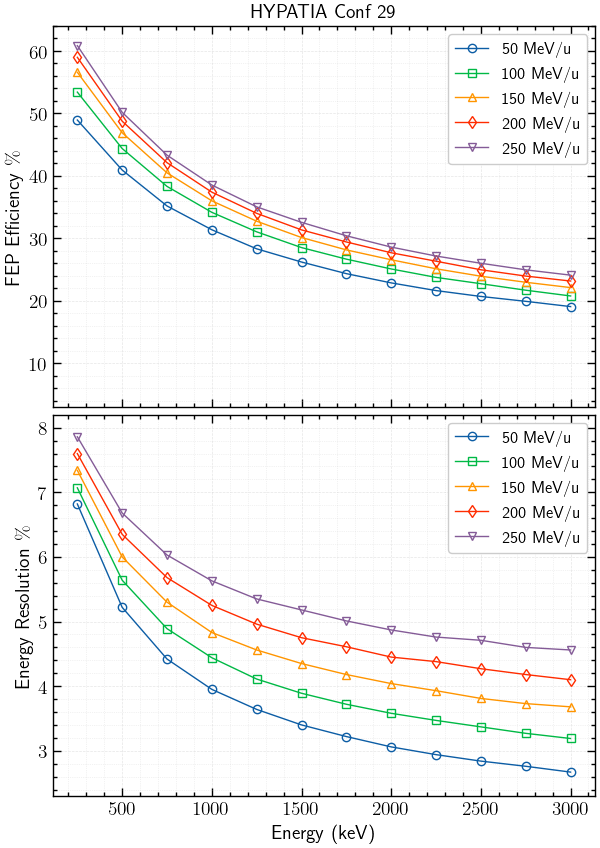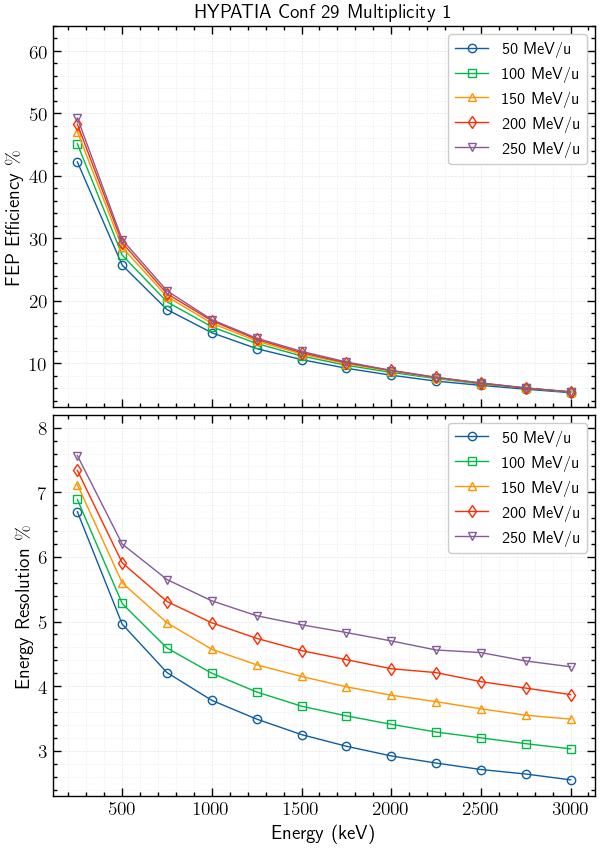-HYbrid Photon detector Array To Investigate Atomic nuclei-
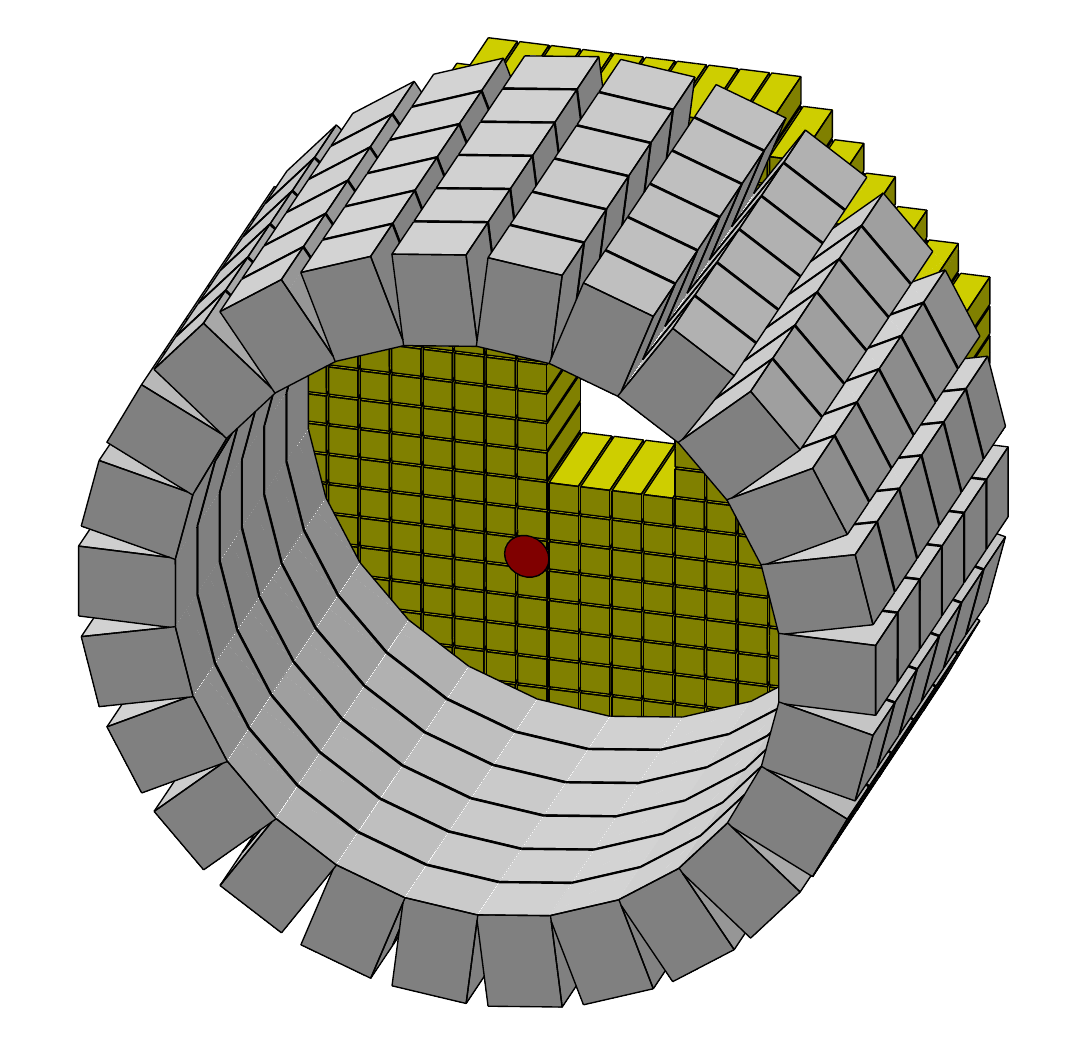
Introduction
Following the lasting success of the DALI2 and DALI2+, the HYPATIA (HYbrid Photon detector Array To Investigate Atomic nuclei) array is being developed as an upgrade for in-beam γ-ray experiments for slowed down and fast rare isotope beams at the RIBF. HYPATIA will be composed of a combination of about one thousand HR-GAGG(Ce) and CeBr3 scintillation crystals, which will gradually replace the NaI(Tl) crystals of DALI2+ to allow for a continuous physics program. Completion of the project is anticipated to be in line for the planned RIBF upgrade in 2031. Central to this upgrade is a primary beam intensity improvement of a factor 20, from 100 pnA to 2000 pnA, for 238U primary beam at 345 MeV/nucleon. Details on the RIBF upgrade plan can be found here.
Concept
The design of the HYPATIA array has taken into account the following iprovements with respect to DALI2+
- Higher efficiency: To reach further into Terra Incognita, reduce the amount of measuring time and imprving the quality of the γ-γ coincidence spectra we aim to increase the efficiency to ~50%.
- Better energy resolution: To resolve transitions close in energy and exploit the lifetime effects in the lineshape we would like to achieve an energy resolution lower than 5% at 1 MeV at a beam energy of 100 MeV/nucleon.
- Improved peak-to-total ratio
- Superior time resolution: To increase the background supression, a time resolution below 1 ns for the CeBr3 crystals and below 2 ns (FWHM) for the GAGG crystals is desirable.
- Flexibility and freedom in the configuration: To be able to move the array to the different spectrometers of the RIBF, and to optimize the configuration depending on the need of each experiment. The concept allows for the use of any desired configuration and target-to-detector distance.
Possible Configuration for (p,2p) and (p,pn) Reactions
Below simulated energy resolution and efficiency are shown for configuration 26, comprising 384 GAGG crystals of 25 x 25 x 100 mm3 and 624 CeBr3 detectors. At 100 MeV/nucleon, a full energy peak efficiency of 50 % and a resolution of 5 % is achieved for a gamma ray of 1 MeV. The large angular coverage and segmentation allow for efficient anti-Compton filtering, i.e., multiplicity 1 events, with improved energy resolution. This configuration, compatible with liquid hydrogen target plus vertex tracker systems like MINOS or STRASSE, keeps a high efficiency by large angular coverage, while maintaining a good energy resolution.
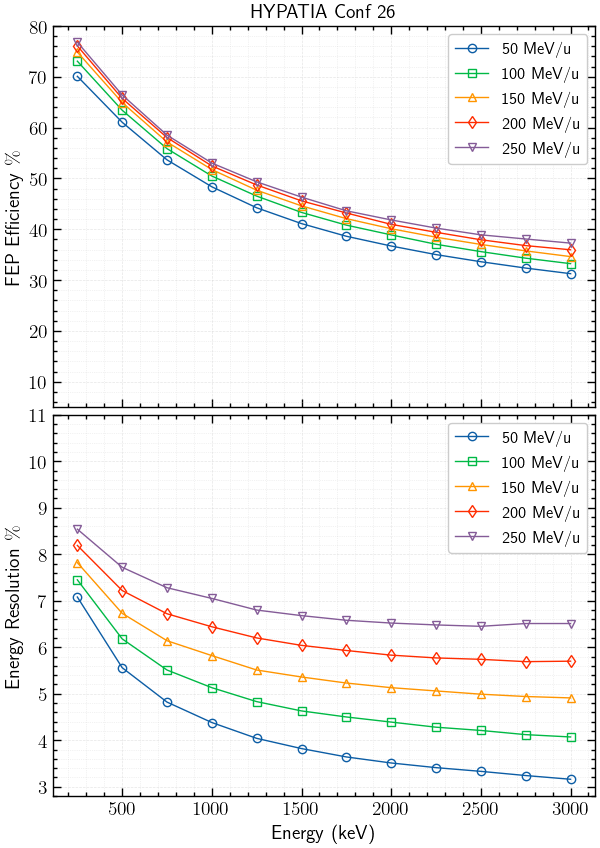
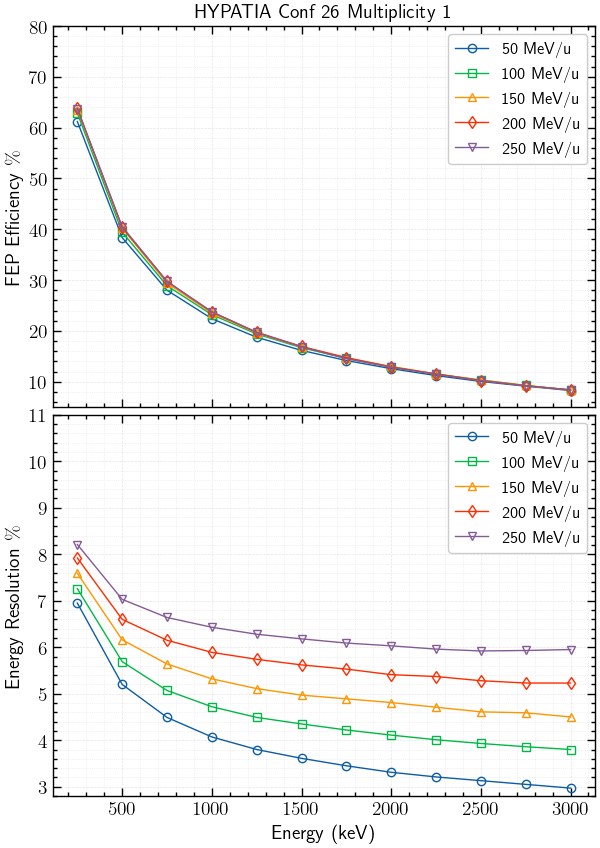
Possible Configuration for Inelastic Scattering
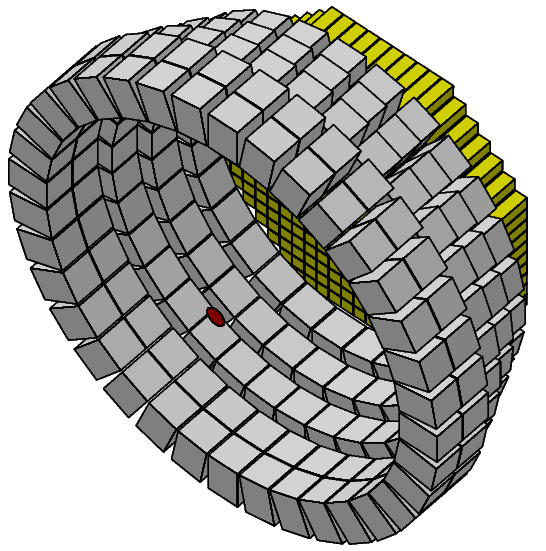 Inelastic scattering at large beam velocities induces a lot of atomic background, particularly when employing targets with high element numbers.
Due to the Doppler shift correction, not all gamma-ray angles are suitable. Typically, at detector angles between 60 to 90 degrees relative to the beam axis,
the atomic background dominates over the peak in a Doppler shift corrected energy spectrum. Accordingly, in this configuration the crystals are place only at forward
angles with a larger distance to the target. This allows for an improved energy resolution, albeit lower efficiency. At At 100 MeV/nucleon, an energy resolution of
4.5 % and an FEP efficiency of 35 % are achieved for a gamma ray of 1 MeV, while the numbers are 3.7 % and 27 %, respectively, for a gamma ray of 2 MeV.
Below are the plots for configuration 29.
Inelastic scattering at large beam velocities induces a lot of atomic background, particularly when employing targets with high element numbers.
Due to the Doppler shift correction, not all gamma-ray angles are suitable. Typically, at detector angles between 60 to 90 degrees relative to the beam axis,
the atomic background dominates over the peak in a Doppler shift corrected energy spectrum. Accordingly, in this configuration the crystals are place only at forward
angles with a larger distance to the target. This allows for an improved energy resolution, albeit lower efficiency. At At 100 MeV/nucleon, an energy resolution of
4.5 % and an FEP efficiency of 35 % are achieved for a gamma ray of 1 MeV, while the numbers are 3.7 % and 27 %, respectively, for a gamma ray of 2 MeV.
Below are the plots for configuration 29.
Total Absorption Spectrosopy and Lifetime Measurements
By placing the GAGG detectors in a closely packed geometry, a FEP efficiency of 80 % can be achieved for a 1 MeV gamma ray. Taking advantage of the excellent timing properties of CeBr3, also the option of direct lifetime measurements is explored.
